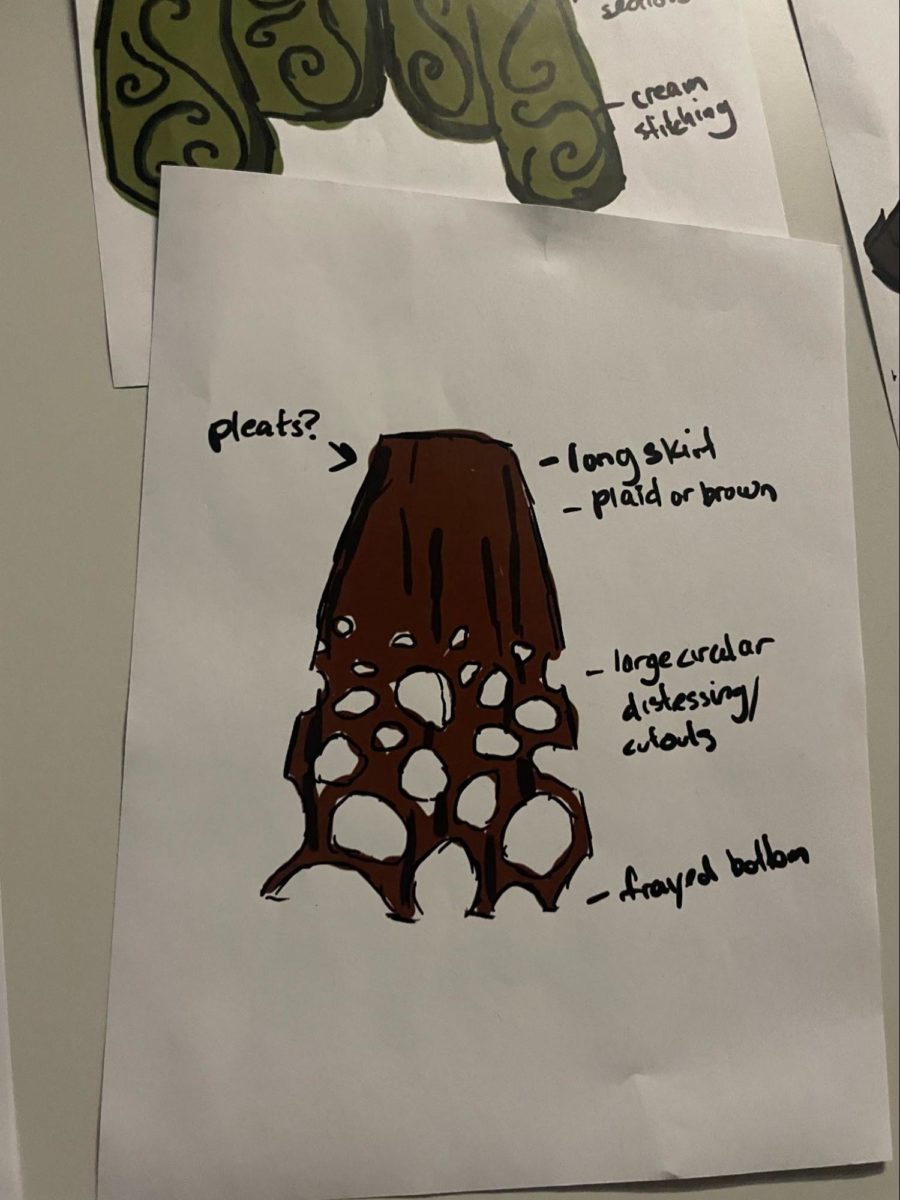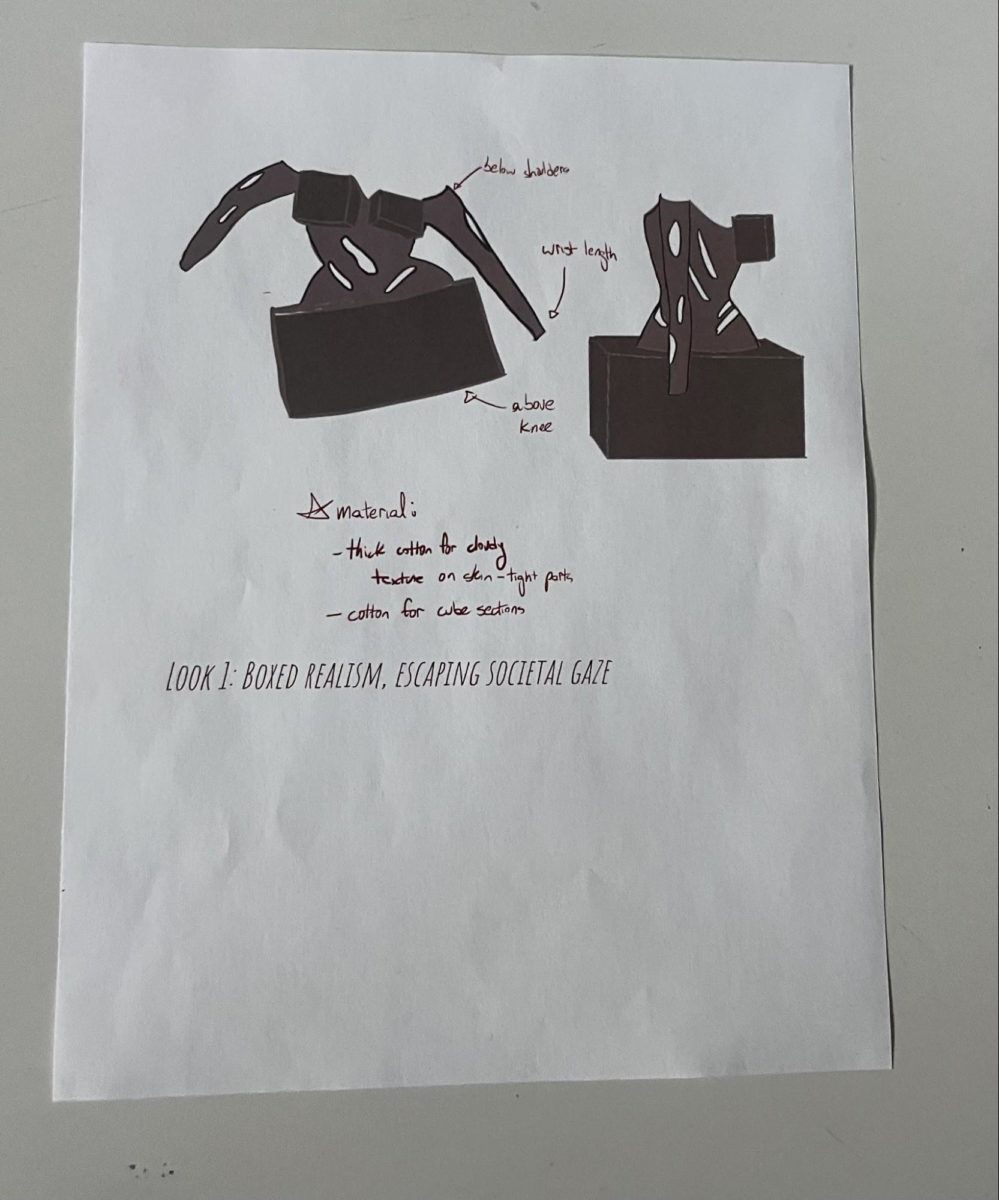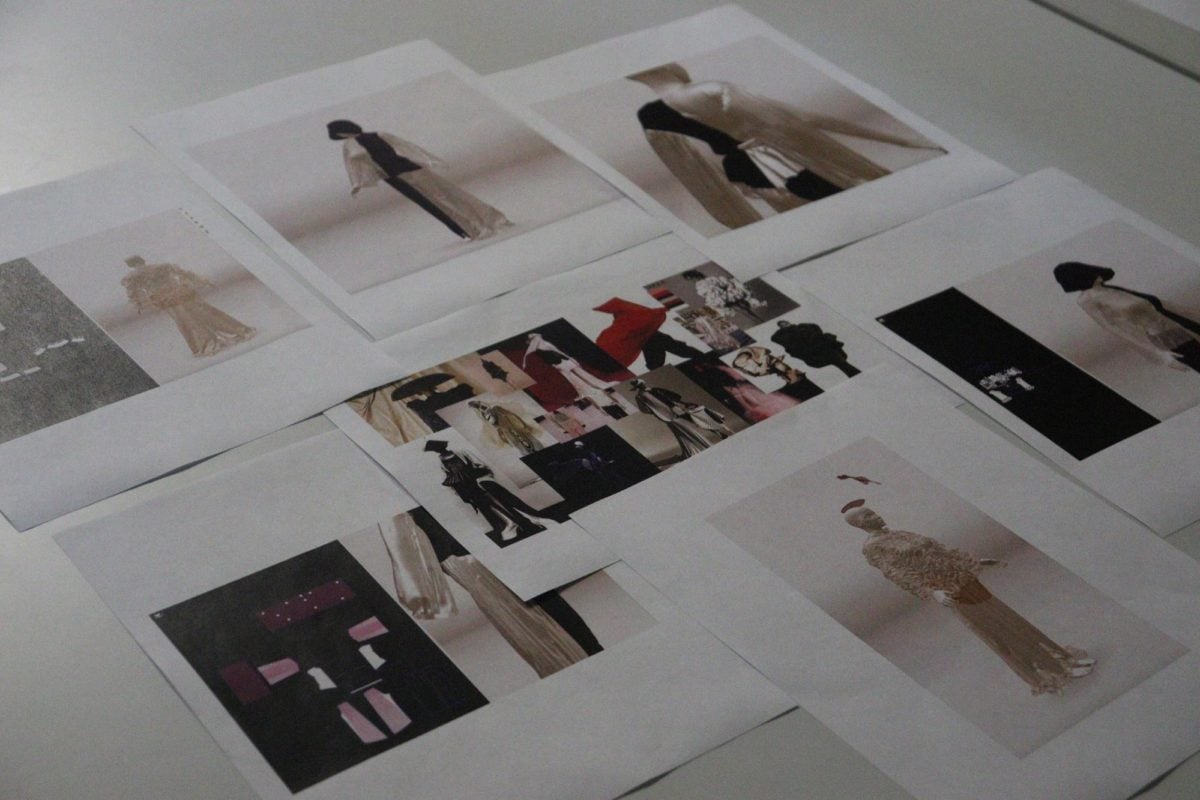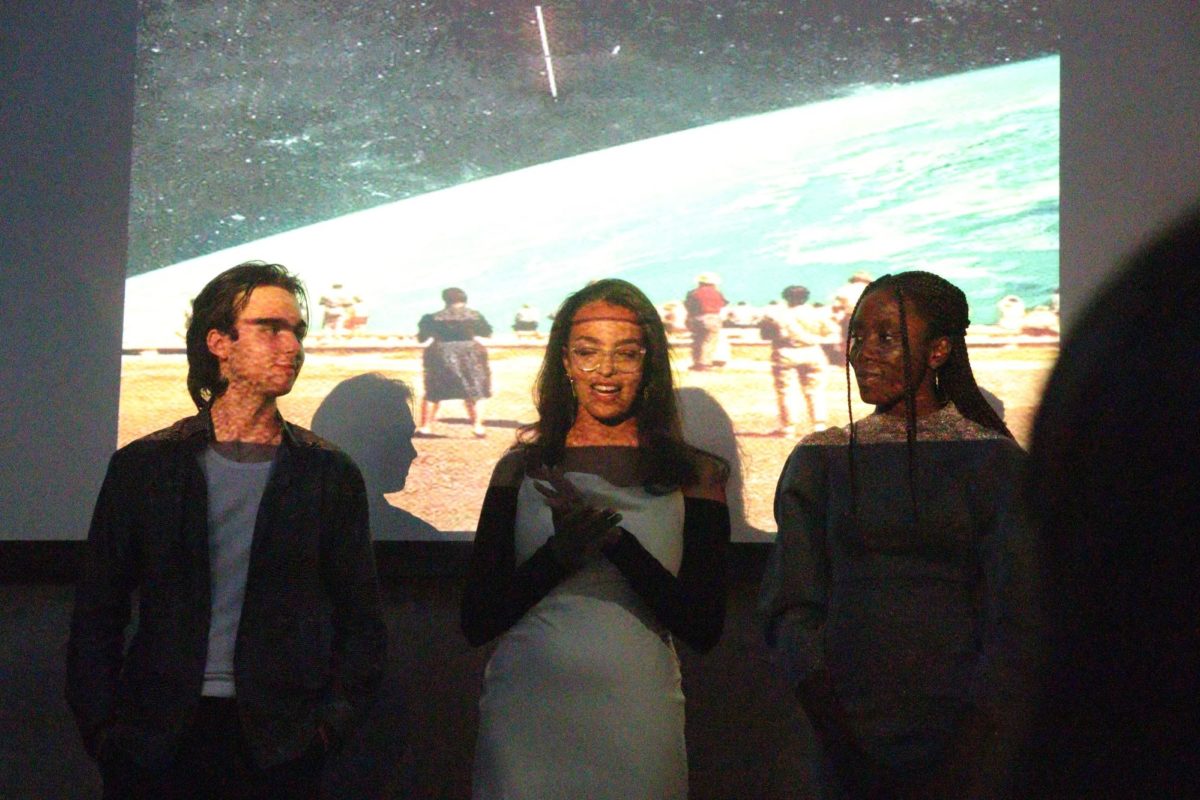Distorted television static covers the projector screen on the wall, and D. School’s dimly lit atrium is illuminated by the screen’s faint glow. Murmurs of anticipation mix with rumblings of synthetic rhythms and 1980s jazz. Onlookers overflow from the seats onto the stairs, chatting and laughing. The diverse audience has come for a singular purpose: fashion.
Students from all corners of campus convened on Wednesday to witness FashionX’s first fashion show of the year, titled, “Back to the Future: Reconstructing the Fashion Playbook Without Size, Gender or Season.” Ten FashionX designers have been working toward this moment — designing, experimenting and planning — since the fall. On the catwalk, the student designers showcased the fruits of their labor, 16 outfits in total, much to the excitement of the audience. The FashionX team masterfully distinguished this exciting affair from most fashion shows: the event was completely digital, with a video showcasing the designs as the main event.
While traditional runways employ physical stages and human models, the night truly embodied the ideals of the “Back to the Future,” utilizing a high-tech 3D software to drive the night’s festivities. Browzwear, FashionX’s partner for the night, is the fashion industry’s rising leader in 3D design software. Browzwear boasts helping apparel companies like Columbia, Adidas, Lululemon, Nike and New Balance increase productivity, speed up time to market and enhance sustainability. Using the software, the FashionX cohort developed personalized true-to-life designs on digital models.
The screen glitched once more, marking the show’s opening, and rhythmic reverberations beckoned the 16 virtual Browzwear models to the panoramic screen on the wall. The night’s stage is complete with a 3D geometric spiral surrounding a glossy silver platform, resembling a hollow futuristic exoskeleton.
The human figures on the screen stood in a row, while a few levitated about four feet off the ground. The clothes themselves were an amalgamation of dyads: the past and the future, light and dark, symmetrical and asymmetrical, uniform and abstract. Each designer takes inspiration from unique sources: some look to Chinese streetwear or popular culture, others to the restorative nature of forests and bridal veil stinkhorn mushrooms.


The first look, designed by Osadolor Osawemwenze ’24, immediately set a high bar for the night, ambushing me with rich earthy hues and layered fabrics. On the model’s head rested a dreamy, Robin’s Egg and cashmere-colored headscarf; the embedded pattern resembled the blur of human figures passing on the street.
Situated on the upper body was a forest-green distressed sweater with mini gaps of fabric creating nerve-like pathways on the chest; a black stitched vest was overlaid and crisscrossed across the front and back, enveloping the wearer in a warm hug . Accentuating the waist was a gold and white belt with an oval buckle, part of an homage to Osawemwenze’s Texan roots.
A midi black skirt extended just beneath the knees, and pleats on the upper half of the garment called attention to the multidimensional nature of the ensemble. Osawemwenze rounded out the look with a pair of baggy blue jeans beneath the skirt.
What followed were fifteen more designs created by Alison Cabanday ’24, Catherine Sarca ’22, Lyndsey Kong ’22, Michael Crinot ’24, Neil Cordingley ’23, Olivia Wang ’24, Rayouf Alhumedhi ’23, Thomas Escudero ’24, Vincent Hao ’22 and Osawemwenze.
My favorite look of the night, imagined by Thomas Escudero, was described as “boxed realism and escaping societal gaze.” The outfit featured an ash-gray body-con dress that fell to about mid-thigh. Skin peeked through the dress’s various asymmetrical slits on the stomach, biceps and forearms. Around each breast and surrounding the hips was a box, all at once encasing the body in safety and accentuating the figure of the model.

The actual show was just under four minutes long, but the experience was imprinted on my mind. The event’s production team — spearheaded by co-presidents Timi Adeniyi ’23 and Kali Hough ʼ22, Vice President Tommy Bruzzese ’23 and Program Director Cole Crichton ’24 — was not only successful at sharing the visions of their fellow FashionX designers, but also (via the ensuing Q&A panel) highly effective at asking the greater question of how to address modernization.
During the panel, the designers demonstrated great appreciation for the opportunity to utilize such coveted and versatile software. Hao remarked that Browzwear expedites the traditional design process, but that there are definitely pros and cons to the elimination of physical design and modeling. Osawemwenze spoke on the challenges of big-picture thinking when it comes to designing virtually. In a world in which trends are fleeting and gendered expectations often dictate what fashion should look like, student designers shared a desire to make clothes as genderless and seasonless as possible.
While digital fashion shows have been readily adopted to meet the needs of pandemic restrictions, the panel discussion raised important questions regarding the digital revolution: Who benefits from this transformation? Who gets left behind? Is this new reality accessible to all? What is lost when real models cease to walk the runway? On the other hand, what is gained? To further prompt these questions, on each seat at the venue rested a slip of paper with provocative messaging. “Are there consequences to fashion’s digital revolution?” one reads.

Though the event fostered community and creativity, the real undertone of the night was that of transformation. The fashion industry must move away from restrictive, gendered and seasoned notions of the past and into a future that embraces fluidity for the sake of self-expression, liberation and exploration.
FashionX’s show delivered on racial representation, but I was slightly disappointed to notice how the night’s promise of body inclusivity fell short, as the digital models were mostly tall and slender. Although much to my chagrin, this aspect reminds me how critically the fashion industry needs to center diversity on all levels. Fashion is for everyone, not just the tall and slender. Crinot put it wisely, saying that clothes should be made to fit the person — the person shouldn’t have to fit the clothes.
FashionX thrusts us back to the future, as we prepare to bear witness to the reconstruction of the fashion playbook into a living entity that traverses all genders, seasons and sizes.

Editor’s Note: This article is a review and includes subjective opinions, thoughts and critiques.
